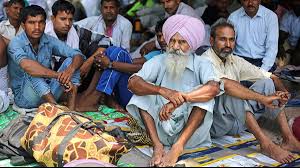


In Punjab, out of 117 seats, 34 are reserved. Of these, 69 seats come from the Malwa region, with 19 reserved for Scheduled Castes. The Majha region has a total of 25 seats, with 7 reserved for Scheduled Castes. Out of the 23 seats in the Doaba region, 8 are reserved. During the Lok Sabha electoral, these Dalit votes could change the dynamics quite easily.
Due to a larger population of Dalits in Punjab, this is reflected in the state’s electoral dynamics. Dalit voters in Punjab are not consistently aligned with one party. This is why their votes swing between the Akali Dal, Congress, and AAP.
The Doaba region has a significant Dalit population, with votes reaching up to 45% in some areas.
Overall, the Dalit population in Punjab significantly influences the outcomes on several seats.
In the 2017 Assembly elections, out of the total 34 reserved seats, Congress won 21, while AAP secured 9 seats. Meanwhile, 4 seats went to the Akali-BJP alliance. It’s not that Dalits are limited to specific areas; their presence is significant in both the Majha and Doaba regions. In 13 Assembly constituencies, the minority community’s population exceeds 25%.
Similarly, the Ravidasia community’s population is more than 35% in 15 constituencies.
Punjab’s politics shows that Dalits’ votes don’t align with just one party due to various reasons.
Dalit Brotherhood Across 39 Castes:
In Punjab, the Dalit community is divided into 39 castes. Their mutual interests often clash.
The major Dalit castes in Punjab include Ramdasia, Ravidasia, Mazhabi, Valmiki, Bhagat, and Kabirpanthi. In the 1996 Lok Sabha elections, the Shiromani Akali Dal had allied with the BSP. This alliance won 11 out of Punjab’s 13 seats. Of these, the Shiromani Akali Dal won eight, while the BSP secured three. In that election, Congress only managed to win two seats. After 1996, Dalits started shifting towards different parties rapidly, although before that, the majority of their votes went to Congress.